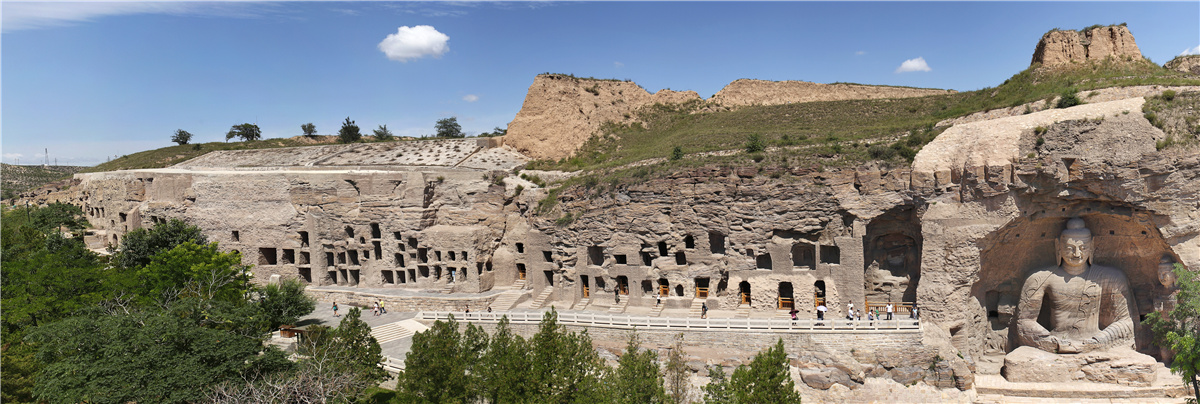Yungang Grottoes

The Yungang Grottoes, in Datong city, Shanxi Province, with their 252 caves and 51,000 statues, represent the outstanding achievement of Buddhist cave art in China in the 5th and 6th centuries. The Five Caves created by Tan Yao, with their strict unity of layout and design, constitute a classical masterpiece of the first peak of Chinese Buddhist art.
The massive Yungang Buddhist grottoes were cut from the mid-5th Century to early-6th Century AD. Comprising 252 caves and niches and 51,000 statues within a carved area of 18,000 square meters, the Yungang Grottoes represent the outstanding achievement of Buddhist cave art in China. The Five Caves created by Tan Yao are a classical masterpiece of the first peak of Chinese art, with a strict unity of layout and design. The will of the State is reflected in Buddhist belief in China during the Northern Wei Dynasty since the Grottoes were built with Imperial instructions. While influenced by Buddhist cave art from South and Central Asia, Yungang Grottoes have also interpreted the Buddhist cave art with distinctive Chinese character and local spirit. As a result, Yungang Grottoes have played a vitally important role among early Oriental Buddhist grottoes and had a far-reaching impact on Buddhist cave art in China and East Asia.